|
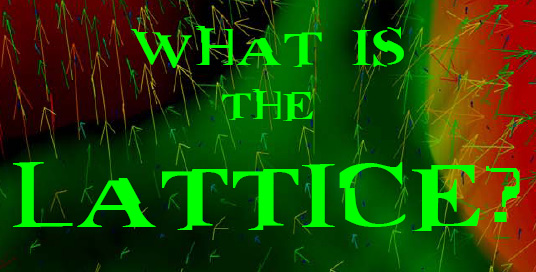
Wake up… Wake up…
You’ve been living in a dream world. A classical world of solid objects, bouncing balls
and Newton’s laws. It is the world that you see, but your eyes have been veiled from
the truth.
The truth is that behind the classical world lies a hidden world, the quantum world.
You may see a solid wall in front of you, but if you could look closer you would see the
molecules that form the wall. Closer still and the atoms which make up the molecules
would come into view. Look even closer and you will perceive the protons, neutrons and
electrons which form those atoms, and the strange quantum world they live in. A world
where nothing is certain, and particles can be in two places at once. A world where the
act of looking changes what is there.
If your eyes could perceive at a scale smaller than the protons and the neutrons, you
would see that they are made up of smaller particles. These subatomic particles are
quarks, and they are born into bondage. The force which binds the protons and neutrons
in the atom is in fact merely a remnant of the strong interaction which the quarks
experience. The strong interaction is mediated by particles called gluons, and the
force with which they bind the quarks together is so strong that they are destined to
remain trapped by their gluonic captors, except at the highest energies where quarks are
liberated into the quark-gluon plasma.
The theory which describes quarks and gluons is Quantum Chromodynamics (QCD). It is a
highly complex theory which is extremely difficult to solve. While there are many
models which can used to study QCD, the only known way to study the theory without
approximations is to place space-time on a four dimensional lattice, so that the theory
can be simulated on a computer. This is what we call Lattice QCD, and it is
computationally demanding, requiring the use of cutting-edge supercomputers.
The images on this poster were made using Lattice QCD. What is the lattice? Exploring
the strange world of quantum physics, or playing with some of the fastest supercomputers
in the world are part of the answer. To find out the rest, you must experience it for
yourself. How you ask? Study physics at the University of Adelaide and be a part of
the Centre for the Subatomic Structure of Matter.
Quick Facts:
Strong Nuclear Force
Of the four basic forces
of nature including the
strong nuclear force, the
electromagnetic force,
the weak nuclear force
and gravity, the nuclear
force is the strongest.
However, it has a very
short range and therefore
the particles must be
close before it is
effective. Ultimately its
purpose is to hold
together the subatomic
particles of the nucleus |
Quark
Any of a group of six
elementary particles
having electric charges
of a magnitude one-third
or two-thirds that of the
electron. They are the
building blocks of
matter. |
Gluon
A massless, neutralcharge
elementary
particle which mediates
the strong interaction
and binds quarks to form
hadrons like the proton. |
Quantum Chromodynamics
In addition to electric
charge, quarks possess a
type of charge called
colour charge. Particles
with colour charge
experience the strong
interaction, which is
mediated by the gluon
field. The theory which
describes the strong
interactions between quarks
and gluons is called
Quantum Chromodynamics, or
QCD for short. |
Lattice QCD
While the gluons are the
particles which carry the
strong force, they
themselves possess colour
charge. This means that
the gluons interact with
each other as well as the
quarks. This property of
QCD makes it extremely
complex, and one of the
best ways to study QCD is
on the Lattice, where the
theory is formulated on a
space-time box simulated on
supercomputers. |
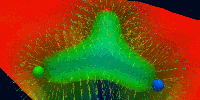
|
 |
 |
Visualisations:
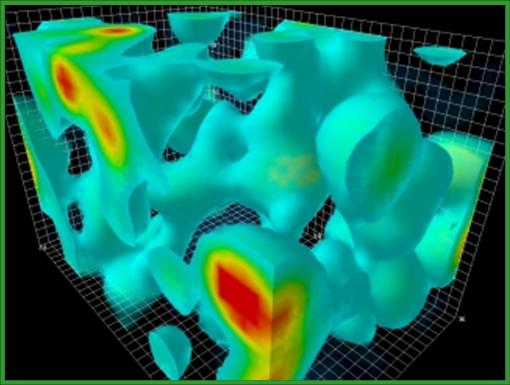 |
A snapshot of the QCD vacuum
showing that empty space is not
really empty. This is a gluon
field. This is what you would
see when you stare into empty
space if you could see gluons.
The red hot spots indicate where
the gluon field is strong.
Isolated lumps correspond with
the knotted-winding nature of
the gluon field. |
|
The topological charge density
or winding density of a gluon
field. The energy fluctuations
of the gluon field illustrated
at top correspond with the
localised winding. Gluons can
wind in positive (red to
yellow) and negative (blue to
green) directions. |
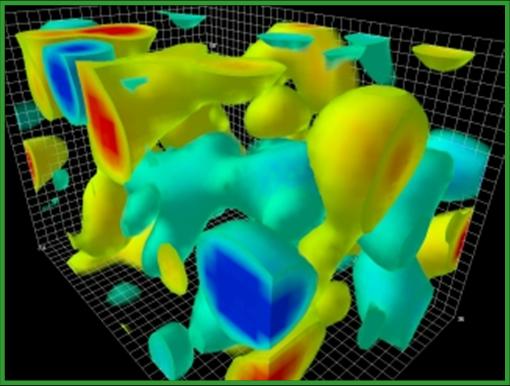 |
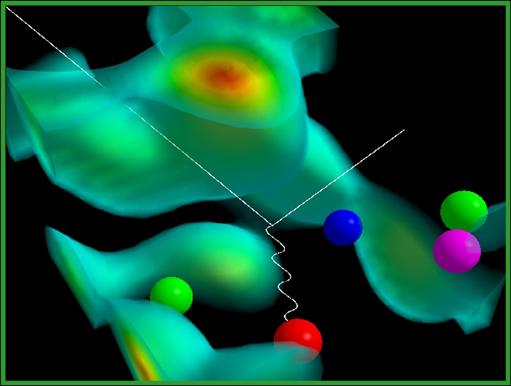 |
The Proton
The red, green and blue
spheres are quarks, confined
by the gluon field to form a
proton. The pair of green and
magenta (anti-green) spheres
are a quark-antiquark pair,
forming a meson. The quarks
only make up 3% of the
proton’s mass, and the gluon
field makes up 97% by
Einstein’s equation m = E/c2.
Hence, the majority of all
mass originates in gluon
interactions.
The white line depicts a
scattered electron fired at
the proton, to probe its
structure. |
|
Topological charge
density of a single gluon
field configuration. |
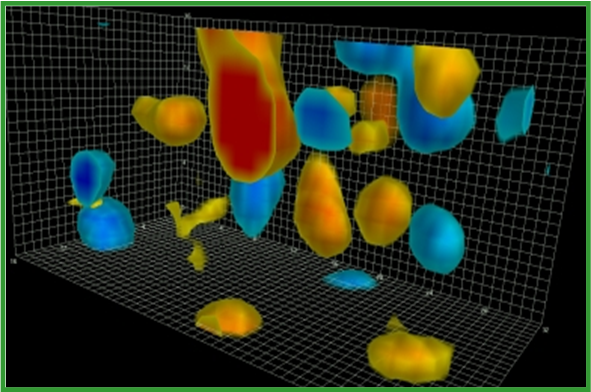 |
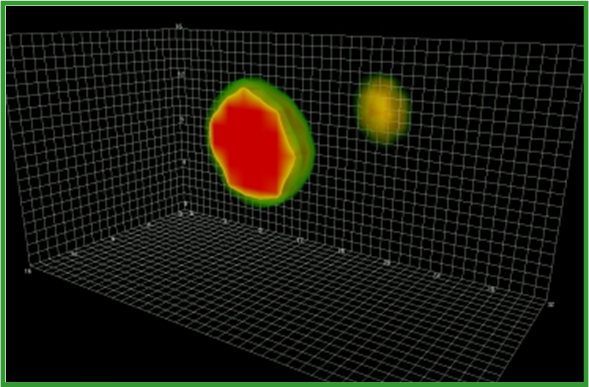 |
Quark eigenmode
density on the same
configuration. Note that
the quark field is
localised on a topological
object, indicating the
quark field and topological
fields are correlated. |
Computation
Orion
Is a high performance
compute cluster from Sun
Microsystems. When it was
installed in June 2000 it
was the fastest
supercomputer in the
Southern Hemisphere and
ranked #188 in the 500 top
super computers of the
world. It’s primarily used
for Lattice QCD
calculations. |
 |
 |
Hydra
Is also located at the
University of Adelaide.
Hydra ranked #106 in the
500 top supercomputers of
the world in June 2003.
Hydra is used for
computational physics
(including Lattice QCD),
chemistry, biotechnology,
engineering, geoscience,
petroleum engineering,
applied mathematics, water
resource management and
computer fluid dynamics. |
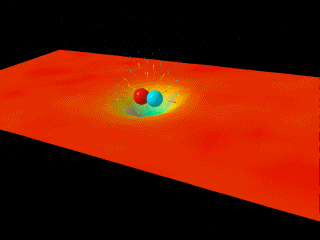 |
The
expulsion of the QCD vacuum
from the region between a
quark-antiquark pair. The
tube joining the two quarks
reveals the positions in
space where the vacuum
action is maximally
expelled and corresponds to
the famous "flux tube" of
QCD. |
Free fonts used with permission. “Matrix” TrueType font ©Charlotte Iona Dymock, 2000. “Miltown” TrueType font ©Apostrophe, 2000. Poster design and content by Brigitte Kamleh and Waseem Kamleh. Images generated by Derek Leinweber. Caption content sourced from Derek’s webpage. Some definitions sourced from http://Dictionary.com/ and http://aether.lbl.gov/.
 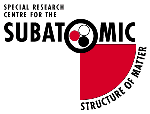
|



